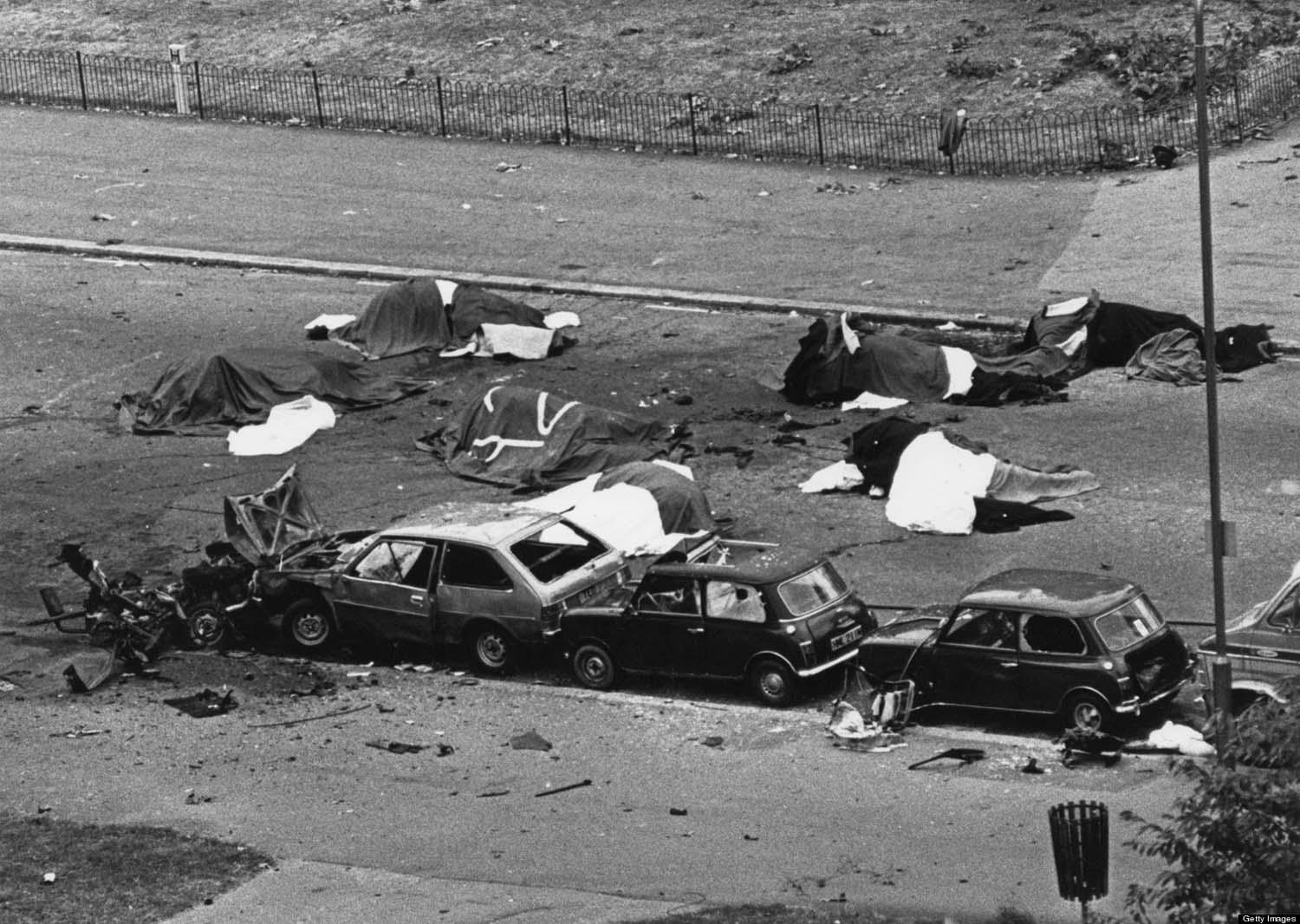
The aftermath of the Hyde Park bombing which killed four soldiers, 1982.
The Hyde Park and Regent’s Park bombings were one of the worst IRA atrocities on the British mainland, killing 11 soldiers and seven horses and leaving dozens injured.
The bombs were detonated just a couple of hours apart on July 20, 1982, and timed to cause maximum casualties. The military casualties were quickly removed.
But long-range camera lenses captured, in dreadful detail, the aftermath with the shattered remains of the car bomb surrounded by dead horses.
Part of the power of the image is that it shows how indiscriminate the attack was. The soldiers were in general the primary target, but the terrorists were willing to accept whatever collateral damage came with them – including these horses. The dead and dying horses reinforce the brutality of the act, and thus the power of the image.
The devices were among a series of IRA bombs that exploded in London over a four-year period, killing 20 people and injuring almost 200.
The Hyde Park blast caused particular outrage, not just because of the human casualties but because of the deaths of the horses. Sefton, a horse that survived, was the subject of enormous media attention and came to be regarded by many in Britain as a national hero.

Seven of the regiment’s horses were also killed or had to be euthanized because of their injuries.
At 10:40 am, a nail bomb exploded in the trunk of a blue Morris Marina parked on South Carriage Drive in Hyde Park. The bomb comprised 25 lb (11 kg) of gelignite and 30 lb (14 kg) of nails.
It exploded as soldiers of the Household Cavalry, Queen Elizabeth II’s official bodyguard regiment, were passing. They were taking part in their daily Changing of the Guard procession from their barracks in Knightsbridge to Horse Guards Parade.
Three soldiers of the Blues & Royals were killed outright, and another, their standard-bearer, died from his wounds three days later. The other soldiers in the procession were badly wounded, and a number of civilians were injured. Seven of the regiment’s horses were also killed or had to be euthanized because of their injuries.
Two hours later, a second bomb exploded under a bandstand two miles away in Regent’s Park, killing seven soldiers with the Royal Green Jackets band.
The bomb had been hidden under the stand sometime before and triggered by a timer. Unlike the Hyde Park bomb, it contained no nails and seemed to be designed to cause minimal harm to bystanders.
The IRA claimed responsibility for the attacks by deliberately mirroring Prime Minister Margaret Thatcher’s words a few months before when Britain entered the Falklands War. They proclaimed that: “The Irish people have sovereign and national rights which no task or occupational force can put down”.
Sefton, a horse that survived the attack at Hyde Park despite suffering serious wounds, became famous after appearing in many television shows and was awarded Horse of the Year.
Sefton’s rider at the time of the bombing, Michael Pedersen, survived but claimed to suffer from post-traumatic stress disorder; after splitting from his wife he committed suicide in September 2012 after killing two of his children.
In October 1987, 27-year-old Gilbert “Danny” McNamee, from County Armagh, was sentenced at the Old Bailey to 25 years in prison for his role in the Hyde Park bombing and others, despite his plea that he was not guilty.
In December 1998, shortly after his release from Maze prison under the Good Friday Agreement, three Court of Appeal judges quashed his conviction, deeming it “unsafe” because of withheld fingerprint evidence that implicated other bomb-makers.
They stated that though the conviction was unsafe it did not mean McNamee was necessarily innocent of the charge.
(Photo credit: AP Photo / Peter Kemp / Corbis).